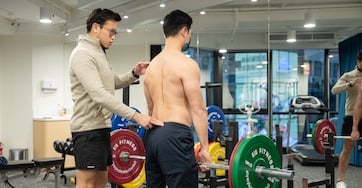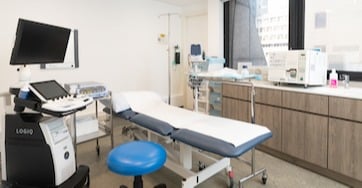Tennis elbow is a condition mostly caused by repetitive overuse or repeated movement of the forearm muscles near the elbow joint. There are several day-to-day activities as well as playing certain sports that could increase the risk of tennis elbow1.
What is Tennis Elbow?
Tennis elbow, also known as lateral epicondylitis, is a common cause of chronic elbow pain 1. Although commonly found in tennis players, tennis elbow can also happen to anyone who exerts stress on the elbow joint.Several activities that exert stress on the elbow joint may cause tennis elbow, for example 1:
- Driving
- Poor office ergonomics
- Gardening
- Decorating
- Playing golf
- Squash
- Swimming
- Any routine work such as using the mouse and keyboard, cooking or using hand tools
Symptoms of Tennis Elbow
The main symptom of tennis elbow is pain around the elbow joint. Patients usually feel pain on the outside of the elbow, and the pain intensifies when you twist your wrist, stretch your arm or make a fist. It may also be difficult to lift your arm.
Tennis elbow can persist anywhere between 6 months to 2 years, with most people (90% of reported cases) recovering entirely within a year2.
Tennis Elbow Treatment
The most important thing to do with tennis elbow is to avoid activities that cause strain on the forearm muscle or the wrist. Cold compressing the area with ice can also ease the discomfort.
The Tennis Elbow Test
The tennis elbow test, also known as the Cozen’s test, is a simple procedure you or your physiotherapist can perform to help diagnose the condition.
Medication for Tennis Elbow
Drugs such as Paracetamol, NSAIDs (such as Ibuprofen and Naproxen) and Aspirin are commonly used to ease inflammation and pain. As NSAIDs contain side effects such as gastrointestinal bleeding, you should consult a doctor before taking any medication3.
Other Treatments
Platelet-rich Plasma Injection
Besides medication, your doctor may also recommend platelet-rich plasma injection (PRP injection). Injecting the patient's platelets can accelerate the healing process of the inflamed tendons and muscles.
Physiotherapy
Patients can also consult a physiotherapist to receive physiotherapy for a tennis elbow. The physiotherapist may apply manual techniques to relieve pain by encouraging blood flow to the muscle. Physiotherapists can also demonstrate specific exercises to help restore the arm’s mobility and strengthen the forearm muscles.
How to Prevent Tennis Elbow?
As well as regular stretching, avoiding activities that cause strain on the forearm muscle or wrist is a way you can prevent tennis elbow5. Here are some other tips:
Day-to-Day Movement
- Refrain from any movement that causes discomfort.
- Keep your wrist and elbow from being used more than the rest of your arm. It may also help to distribute the load to your shoulder's larger muscles.
- Consult a physiotherapist for exercises to strengthen your forearm muscles and learn how to put less strain on your elbow.
- Stretch regularly to increase your blood flow and strengthen the elasticity of muscle tissue.
During Sport and Exercise
Warm-up
Warming up before any exercise prepares your body for intense movement. Before your workout, you can do simple warm-ups such as jogging around the court and tennis elbow stretches. The increase in muscle temperature encourages blood circulation, improves reflexes, and strengthens the elasticity of muscle tissues5.
While exercising
Make sure you are using the correct posture and technique. For example, maintain a normal shoulder range of 90 degrees. Consult a coach with your form or a physiotherapist with exercises that strengthen your forearm muscles. Always use lightweight tools to avoid any extra strain on your muscles5.
Cool down
Jog or stretch for 30 seconds after exercising to encourage blood circulation and lower body temperature, which will help your muscles recover.
Always listen to your body. If your muscles are sore, stop the activity causing pain and rest. Avoid using one part of your arm repeatedly. The stress should be spread evenly throughout your arm to prevent overusing one particular muscle.
Preventing and Solving Your Tennis Elbow
You can minimise and prevent tennis elbow with the proper precautions, equipment and recovery methods mentioned above. If tennis elbow continues to trouble you, visit a physiotherapist for a consultation.
References
- National Health Service. (2020). 'Tennis elbow.' NHS. 10 November 2020. Available from: <https://www.nhs.uk/conditions/tennis-elbow/> [Accessed 11 August 2021].
- National Health Service. (2020). 'Tennis elbow symptoms.' NHS. 10 November 2020. Available from: <https://www.nhs.uk/conditions/tennis-elbow/symptoms/> [Accessed 11 August 2021].
- WebMD. (2020). 'Tennis Elbow (Lateral Epicondylitis).' Jumpstart. 13 June 2020. Available from: <https://www.webmd.com/fitness-exercise/tennis-elbow-lateral-epicondylitis#1> [Accessed 11 August 2021].
- US Centre for Sports Medicine. (2011). 'What Are the Side-Effects of Platelet-Rich Plasma Therapy?' USCSM. 6 June 2011. Available from: <https://uscenterforsportsmedicine.com/what-are-the-side-effects-of-platelet-rich-plasma-therapy/> [Accessed 11 August 2021].
- National Health Service. (2020). 'Tennis elbow prevention.' NHS. 10 November 2020. Available from: <https://www.nhs.uk/conditions/tennis-elbow/prevention/> [Accessed 11 August 2021].
 Central General Practice
Central General Practice
 Repulse Bay
Repulse Bay
 Clearwater Bay
Clearwater Bay
 BodyWorX Clinic
BodyWorX Clinic
 Central Specialist Clinic
Central Specialist Clinic
 MindWorX Clinic
MindWorX Clinic
 Partner Clinics
Partner Clinics
 Family Clinic
Family Clinic
 OT&P Annerley Midwives Clinic
OT&P Annerley Midwives Clinic





